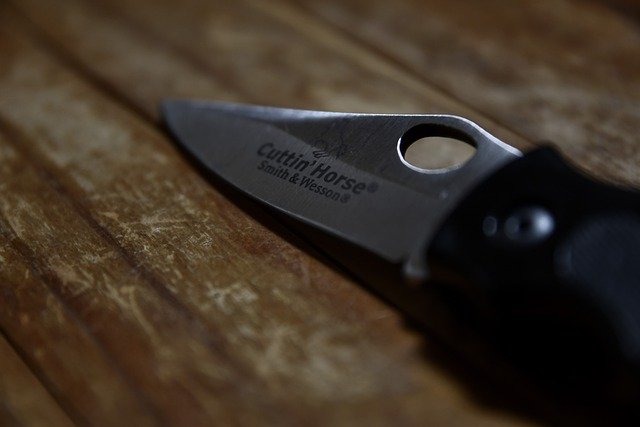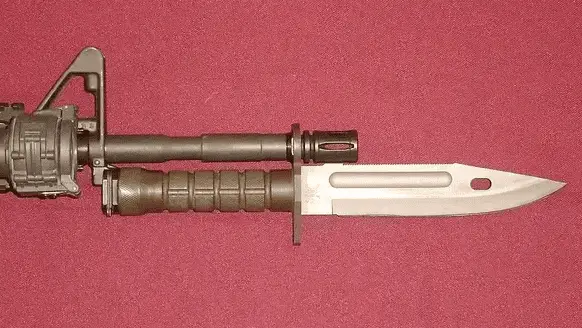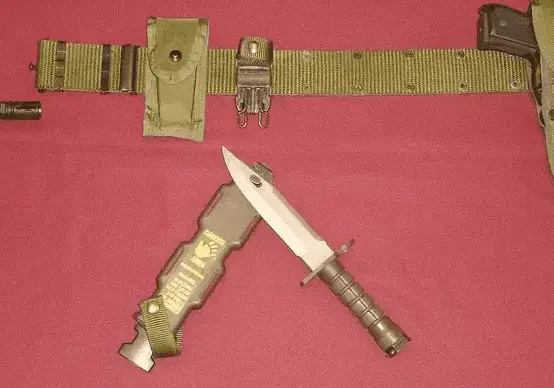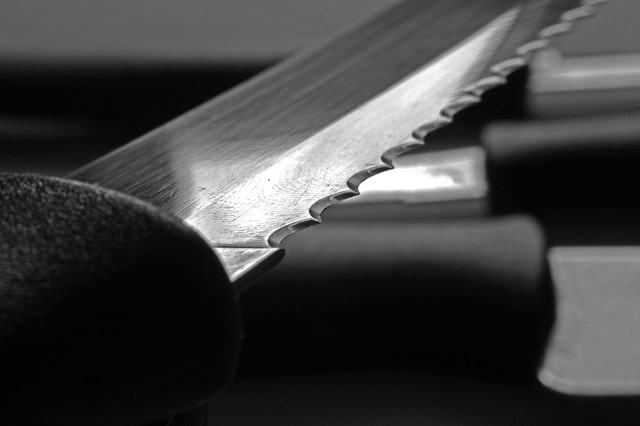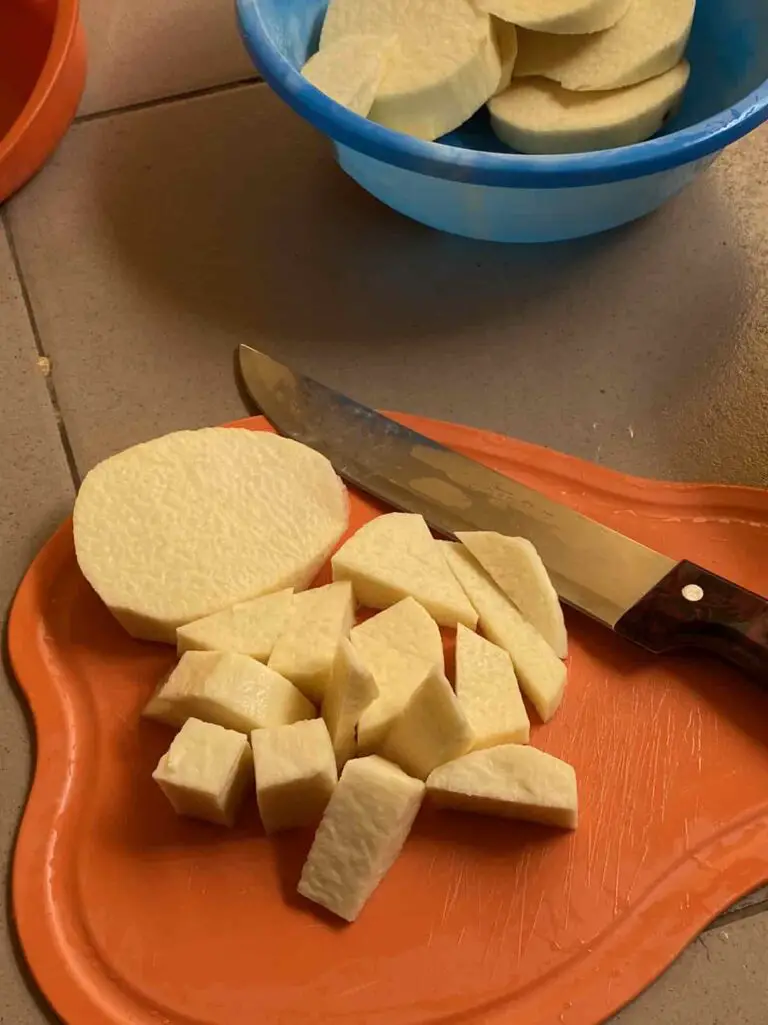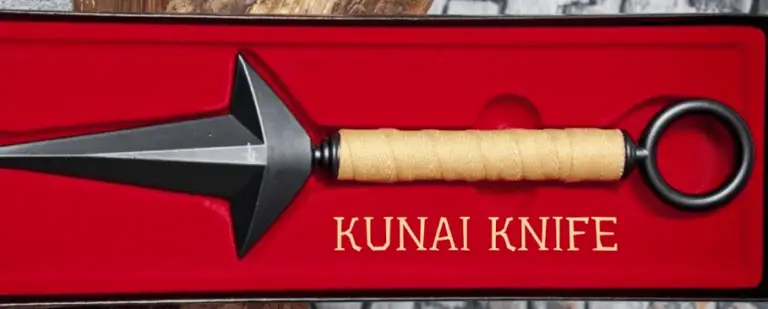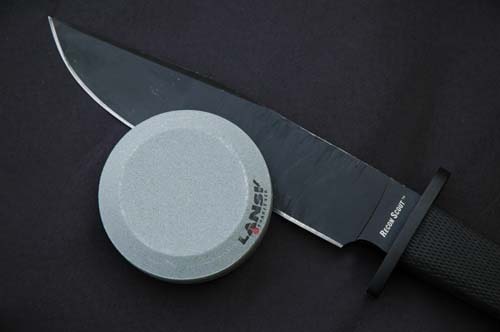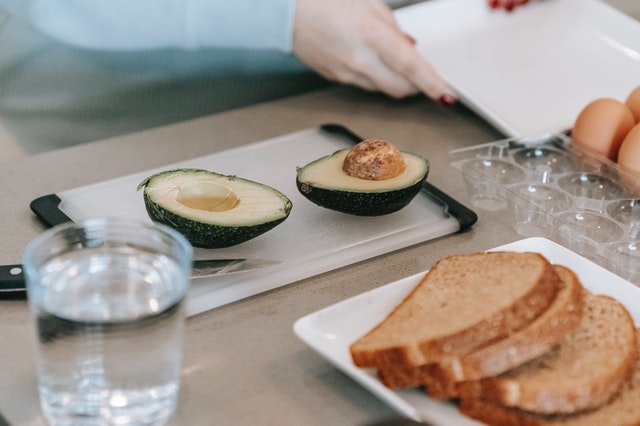Knives come with a lot of functional designs that boost their applications, such as with the full tang vs partial tang differences.
Some other times, though, you’ll find a design element on the knife that doesn’t help in any special way.
If you have felt confused about where holes in some knife blade lie, you’re in the right place.
So, why do some knife blades have holes in them – and should you care?
Table of Contents
Why some knife blades come with holes
Some of these reasons are straightforward and others can be a little bit tricky to wrap your head around.
I’ll leave it to you to decide which is which.
Here goes.
Weight Reduction
A knife’s blade, especially on a well-made knife, will be one of the heaviest parts of the knife.
You already know that the knife’s cutting edge is the most important part for us. While the other parts of the blade are also important, they only support the cutting edge.
Thus, to cut down on all that weight, the knife manufacturer could stamp out a chunk of the blade’s body. This reduces the weight of the knife without sacrificing its functionality.
Managing Friction Better
Some food items are so starchy that they will naturally cause some friction when you are cutting them.
For example, get a piece of potato and a mushroom for this experiment. Cut through the raw potatoes first and, without cleaning the knife first, cut the mushrooms.
The starchy juices from the potatoes, which are now on the knife blade, will increase the friction when you’re trying to slice the mushrooms.
With a knife that had holes in them, the juices from the raw potato would not stick as much and, as a result, give lesser friction when cutting mushrooms.
Thus, these knives with holes in them are great for people who do a lot of food prep and cannot afford to pause between cutting one item and rinsing the knife blade off before cutting another.
Storage

Some knife manufacturers keep the knife holes in there so that you have another knife storage option to explore.
If you have some MAC knives, you would observe such holes on some of the models. With that design element, you can hang up the knife instead of leaving it on the counter.
You don’t have to get a knife with holes just to store them properly, though. Explore other knife storage tips discussed here.
Ease of Use
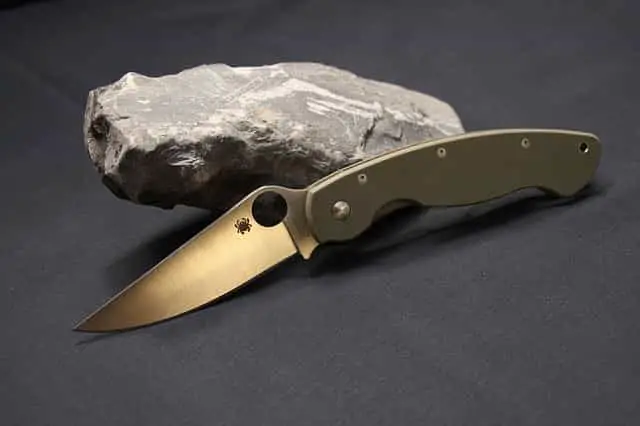
If you have a folding knife with a hole in the blade, there is a high chance it is there to aid opening.
Spyderco designs are famous for being the first to carry such an element on the blade, even though they have now been copied by other folding knife brands out there. The fact that the idea is copied shows that it works
This design element is best suited to manual opening folding knives so that you can push the blade up with your thumb. The design could also find success with semi assisted opening knives too.
Prevent Stickiness
Almost the same as the point on eliminating food friction up there.
Again, if you deal with a decent volume of food prep, you need a knife that doesn’t get food items sticking to it. The hole design on the blade, close to the tips, makes it less likely for food items to stick when cutting and bringing the knife out too.
This is the reason why you will find such features on cheese knives, for example, which are suited for such sticky meals.
Style

I cannot rule out the fact that having holes in the knife blade is also an element of style.
These days, manufacturers would do a lot to stand out from the competition. From employing different kinds of knife wood handles to featuring very unconventional designs as we have on the Coolina knife series, the possibilities are almost endless.
So, while the holes might serve a secondary purpose (such as weight reduction), they might only have been intended as an extra layer of design.
Self-defense
Some theories suggest that knife blades with holes are easier to withdraw from a stab than those full blades.
I have not tested this out myself (and seriously hope to never have to find out). If you work in a military capacity, though, you might want to consider that.
Also, those who are more likely to use a knife for self-defense should explore to see if this holds some weight for them.
If there is even a small element that ups your chances of using a knife better for self-defense, legally so, I believe it is worth pursuing.
Cost Savings
Maybe, just maybe, the knife manufacturer wants to bring you a great knife but the price point doesn’t seem quite right.
So, they might choose to save on the knife by cutting out some metal.
This won’t be an issue if it’s done by a reputable brand. Cos, even though they have reduced the metal that should go into the knife, it will still be engineered finely enough that it delivers on its promise.
For Bayonets
If you have a bayonet with a hole in the blade, that’s the pivot point for the wire cutter built into the knife sheath.
I think that’s a very neat way to make not only the knife more functional but getting some action for the sheath too.
Manufacturer Trademarks

I said it somewhere up there that some manufacturers like Spyderco brought the hole-in-blade style to their pocket knives. They are not alone in this niche.
Rockstead is yet another brand that launches knives with holes in them – and they do this to make their stamp.
All of their knives are well-made and designed with these holes such that the functionality of the knife is not impeded while still making a visual suggestion to allow buyers to recognize the Rockstead knives faster.
Should you get a knife with a blade hole?
This depends on a variety of reasons.
You need to know why the knife hole is there in the first place and if it helps you perform intended tasks better. That way, you can make a logical choice on whether or not you want to have that hole on your knife.
Otherwise, you are looking at an aesthetic-focused design element and you should only choose that knife if you like the appeal of it.
Of course, I’m considering that the knife is of a great quality build and from a reputable manufacturer. Otherwise, the hole on the blade is the least of your problems.
Likewise, you have to consider the fact that you’ll need some special cleaning time for a knife with holes.
For most knives, you could simply wipe them down or wash them by hand normally. On these knives, you might have to spend extra time to remove debris and dirt from the inner holes, maybe with a Q-tip or something that works similarly.
After all, the last thing you want is for different food items and juice residue interacting with the next food item you cut with the knife.
Final Words
The next time you see a knife blade with holes in them, you can make a fairly educated guess as to why the manufacturer went that way.
An interesting deduction here is that the manufacturer might intend the hole for one thing and users will find other uses for it anyway. Likewise, it doesn’t have to be one single reason, considering the various possibilities that can be from the options above.
When getting a knife that has a hole in the blade, though, make sure it’s one you need – and you’re ready to take care of the blade accordingly.

